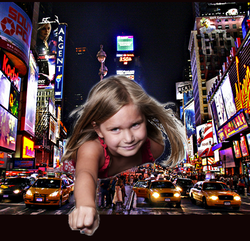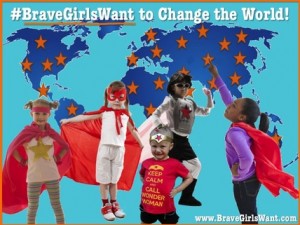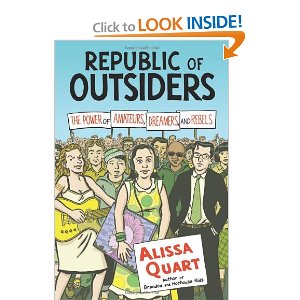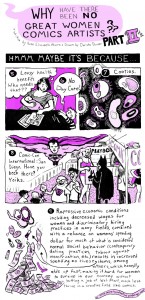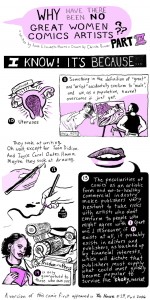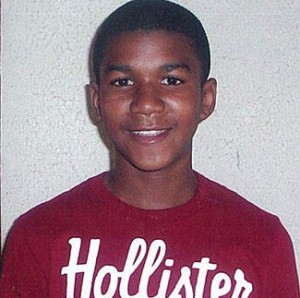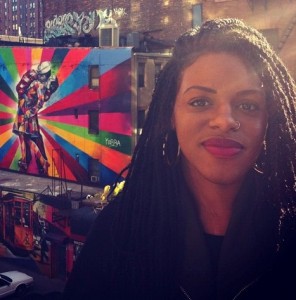 This guest post is brought to you by Kendra Ijeoma, Engagement Coordinator at Women Employed in Chicago, Illinois. A feminist, social media junkie and aspiring social entrepreneur, Kendra mobilizes supporters online and in-person to become activists for women’s economic security, workforce development and access to education. She earned her bachelor’s degree in Sociology from Seattle University with a focus in Women’s Studies.
This guest post is brought to you by Kendra Ijeoma, Engagement Coordinator at Women Employed in Chicago, Illinois. A feminist, social media junkie and aspiring social entrepreneur, Kendra mobilizes supporters online and in-person to become activists for women’s economic security, workforce development and access to education. She earned her bachelor’s degree in Sociology from Seattle University with a focus in Women’s Studies.
In a political climate that is so unfavorable for women, our rights eroded and our needs marginalized at seemingly every turn.
On August 5th, three powerhouse Chicago women participated in a roundtable discussion in honor of Women Employed’s 40th anniversary about how women can build power and exert influence in civic, professional, and political life. U.S. Representative Robin Kelly, author Rebecca Sive, whose new book, Every Day is Election Day, was recently released, and former Chief of Staff to Michelle Obama Susan Sher offered salient advice to women, as well as important stories about how they have achieved success and attained positions of power both in Chicago and nationally.
The conversation could not have come at a better time.
The takeaway? Women can and do have power and influence, but asserting that power can be tricky. For women, the route to success and to making your voice heard means walking a tightrope of proclaiming your individual qualifications and accomplishments, while also working successfully in collaboration with other women.
Susan Sher, now Executive Vice President for Corporate Strategy and Public Affairs at the University of Chicago Medical Center and Senior Advisor to the University President, advised women not to be afraid of, “shameless self-promotion. When you do a great job and you think you’ll be recognized, it just isn’t true. It’s important to take credit for what you do.” This was a theme echoed by each of the women on the panel.
However, Sher, Kelly, and Sive also emphasized that many women are naturally self-effacing, which can undermine our interests. For that reason, banding together with other women can be powerful, and is a vital strategy to make people stand up and pay attention to women’s needs. Sive emphasized that for women, “The route to power and influence is not a route you take alone. There is strength in numbers. You can win with women and for women.” Rep. Kelly echoed that sentiment, adding that, “there’s something special about what women can do together.”
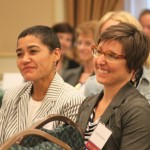 So as a regular woman leading a regular life, where do you start? All of the panelists, as well as Women Employed Executive Director Anne Ladky, who moderated the event, stressed that while it’s important to have women in government and in the board room, the most vital agent of change will be everyday women like you and me standing up and exerting their own power. Every woman can have influence over her life and her circumstances. But we must be vocal in our churches, our neighborhoods, our book clubs, our school boards, and our offices.
So as a regular woman leading a regular life, where do you start? All of the panelists, as well as Women Employed Executive Director Anne Ladky, who moderated the event, stressed that while it’s important to have women in government and in the board room, the most vital agent of change will be everyday women like you and me standing up and exerting their own power. Every woman can have influence over her life and her circumstances. But we must be vocal in our churches, our neighborhoods, our book clubs, our school boards, and our offices.
As women, we need to speak up about issues like paid sick days, family-supporting wages, flexible schedules, access to affordable childcare, healthcare, and education, and countless other issues that impact us – as well as our partners and families. If we don’t take that step, things will never change.
So get out there. Make your voice heard. Shout your accomplishments out loud. Register to vote and go to the polls. Stand up for the issues you care about. Proclaim your message on social media. If you don’t, nobody will. And if you’re in Chicago, get connected with Women Employed, who has been fighting for economic opportunity for women for 40 years. We make it easy for you to make a difference. Visit www.womenemployed.org/act to find out how.

